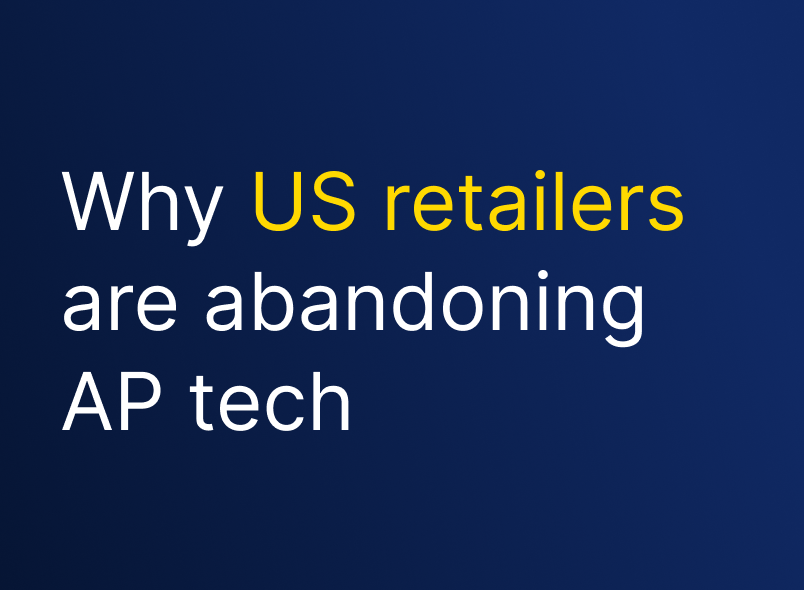Change can be daunting. No matter the size of the organization, retail and law enforcement leaders often hesitate to alter their established methods—even when they recognize the need for improvement. This inherent resistance to change can hinder progress and limit the effectiveness of AP/LP (asset protection/loss prevention) efforts.
But what if there were ways to make AP/LP transformation smoother and more manageable? In this article, we'll explore the concept of change management in the context of retail safety and security and provide five practical strategies to simplify your organization's approach.
Understanding change management
Let's first clarify what we mean by change management and its relevance to AP/LP.
Change management refers to the structured approach for thoroughly and smoothly implementing changes to achieve lasting benefits. This could involve adopting new technologies, updating policies, or restructuring teams — all to address evolving challenges such as Organized Retail Crime or increased rates of violent incidents.
The goal of change management is to help organizations address retail crime more effectively, while minimizing disruptions to daily operations and overcoming resistance from team members.
Let's explore ways to make change management in AP/LP easier for your whole organization.
1. Educate the entire organization, early and often
Challenge: One of the primary obstacles to implementing change is the fact that there are varying levels of understanding across the organization. Directives from higher up may not dilute effectively at the store level. In-store resources may struggle with executing new processes. High turnover rates can exacerbate this issue, making education seem like a never-ending revolving door.
Solution: The key to overcoming this challenge is to prioritize education and make it an ongoing process. Here's how:
- Develop simple, intuitive, and guided processes that are easy to learn and repeat.
- Utilize user-friendly systems that can act as a centralized hub, reducing the learning curve for new employees.
- Leverage your resources, like a world-class customer success team, to provide continuous support and training.
By focusing on education and simplicity, you can consistently execute your safety and security initiatives, even through staff turnover on the frontline.
Example: When implementing a new incident reporting system, create a series of short, engaging video tutorials that guide employees through the process step-by-step. Make these videos easily accessible on mobile devices so staff can review them on the floor if needed. Complement this with regular in-person training sessions and a dedicated support line for real-time assistance.
2. Define key stakeholders
Challenge: Gaining buy-in from internal business partners, such as Operations teams, can be difficult. These stakeholders need to understand why these changes matter, and how they add value to those stakeholders’ specific roles and responsibilities.
Solution:
- Clearly identify all stakeholders who will be affected by or involved in the change.
- Communicate the specific benefits each stakeholder group will experience from the transformation.
- Prove that change isn’t just another task to add to the plate, but will yield valuable improvements to their work.
- Consider partnering with solution providers that work as an extension of your team, facilitating clear communication and buy-in at every level of your organization.
Example: When it comes to implementing a new strategy or solution, cross-functional inclusion is key. That looks different across organizations, but the intent is to make sure everyone impacted by the implementation understands how it impacts their world and the entire business. For example, store operations should understand how their teams may use a new product and if there will be any required communications in their day to day. In a similar way, a retailer’s information security team should understand how a new product actually works and if their team will be required to use it or answer questions about its use at the organization.
3. Plan for how to implement and connect different solutions
Challenge: IT departments often face bandwidth issues when supporting new initiatives, which can slow down or complicate the implementation of new AP/LP solutions.
Solution:
- Choose user-friendly platforms that offer world-class customer support as part of the partnership.
- Opt for advanced products that can deliver results without requiring significant additional bandwidth from your team — in other words, they save time instead of creating more work.
- Utilize responsible AI to automate and simplify complex processes.
By selecting the right tools and planning their implementation carefully, you can reduce the strain on your IT resources and accelerate the adoption of new AP/LP strategies.
Example: When upgrading your case management system, select a system of intelligence that integrates easily with your existing tech stack. Look for features like simplified incident report forms and intuitive user interfaces that reduce the need for extensive training. This approach minimizes the burden on your IT team while still providing powerful tools to support your safety and security efforts.
4. Measure and communicate success
Challenge: AP/LP initiatives often struggle to gain long-term support because their impact can be difficult to quantify. Traditional metrics like shrink percentage don't always capture the full value of AP/LP transformations, especially when it comes to preventing future losses or improving operational efficiency. Moreover, AP/LP teams may find it challenging to effectively communicate their successes to other departments and senior leadership.
Solution: To overcome these obstacles:
- Establish clear, industry-specific metrics for success before implementing changes. These might include:
- Reduction in organized retail crime (ORC) incidents
- Increase in case closure rates
- Improvement in recovery values
- Reduction in time spent on manual reporting tasks
- Regularly collect and analyze data to track progress and identify areas for improvement.
- Develop a communication strategy that translates AP/LP successes into terms that resonate with other departments. For instance, show how improved AP/LP processes contribute to a better customer experience or support sales growth.
- Create visually appealing dashboards or reports that clearly illustrate the impact of your AP/LP transformation.
- Share success stories and learnings with all stakeholders to maintain engagement and support for the change initiative.
Example: If you've implemented a new Retail Crime Intelligence system, you wouldn’t just report on the number of cases entered. Instead, you would highlight how the system has led to increased information sharing with law enforcement, resulting in more successful prosecutions and a measurable decrease in ORC activity in your stores.
By quantifying and effectively communicating the benefits of your AP/LP transformation, you can reinforce the value of the changes, encourage continued adoption, and secure ongoing support and resources for your initiatives.
How Auror empowers transformation
Transformation in AP/LP doesn't have to be a daunting task: The way we handle it at Auror is proof. Auror's platform is designed to address the very challenges we've discussed:
- Ease of Education: Auror's intuitive interface and bespoke customer success strategies make it easy for staff at all levels to learn and use the system effectively.
- Stakeholder Engagement: Auror's platform provides value across multiple departments. Retailers use Auror to not only address ORC but also improve store operations and customer experience, demonstrating the wide-reaching benefits of the system.
- Seamless Implementation: As the Retail Crime Intelligence Hub, Auror often has the ability to integrate with other safety and security products, minimizing the burden on IT departments.
- Measurable Success: Auror's comprehensive analytics and reporting features, such as Insights and Connect the Dots, make it easy to track and communicate the impact of your AP/LP initiatives. For example, a leading global retailer using Auror reported up to $126.5M of prevented loss, $12.5M in hourly wages saved on reporting, and identified the 10% of offenders causing 94% of unrecovered loss.
By choosing Auror, you're not just adopting a new tool — you're embracing a partner that understands the challenges of change management in retail environments.
Ready to simplify your transformation journey? Learn more about getting started with Auror.






.png)
.png)